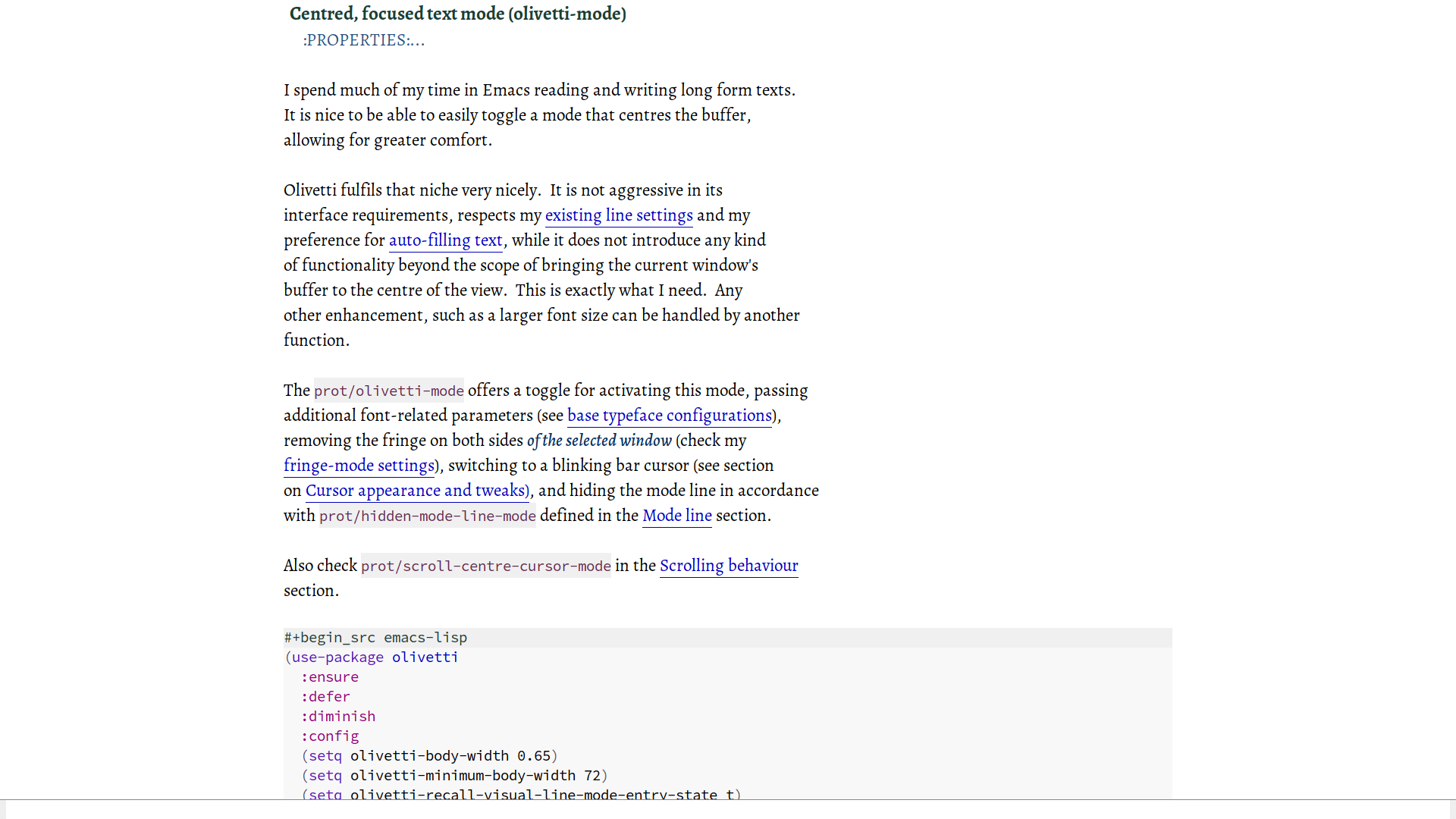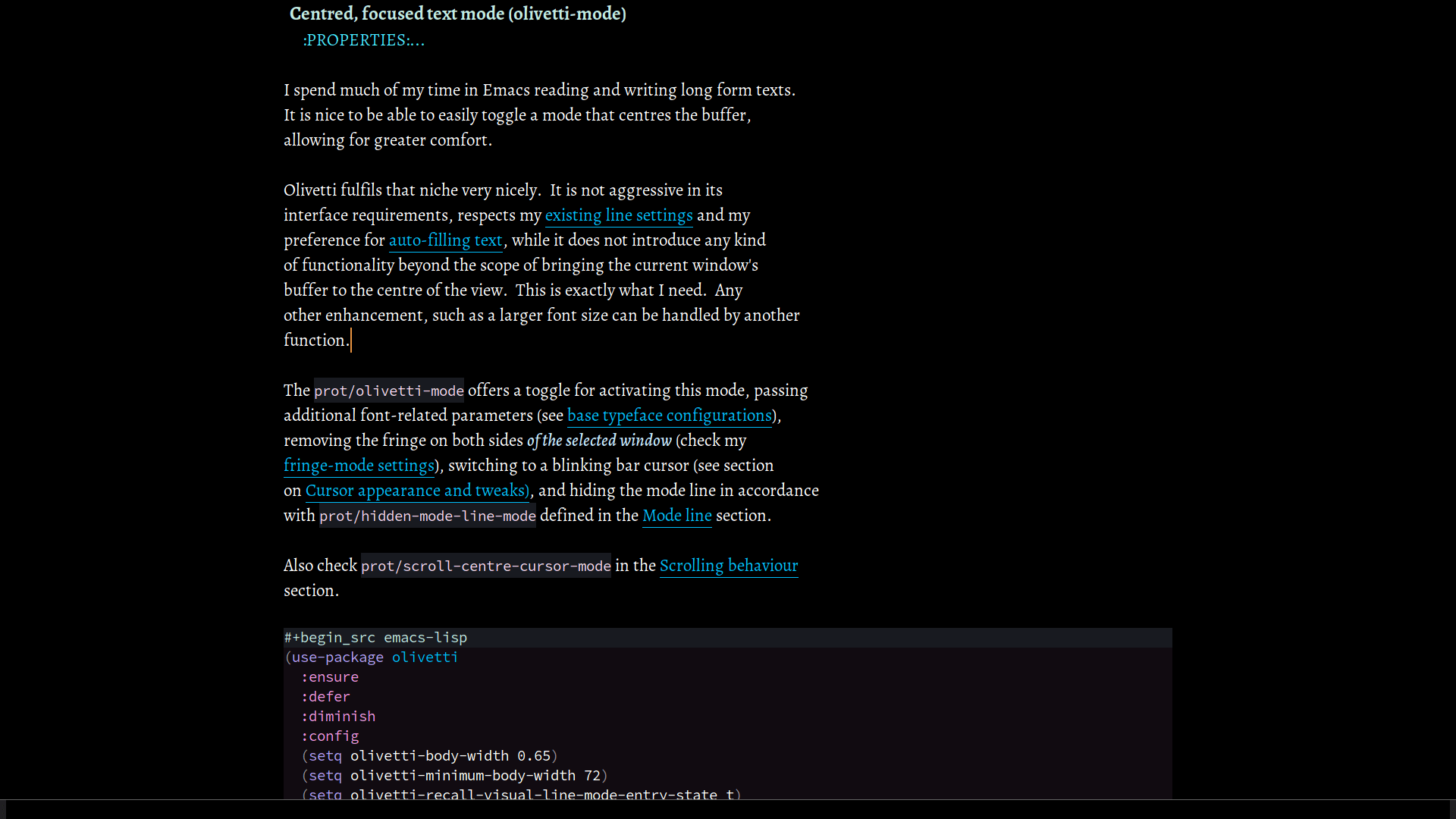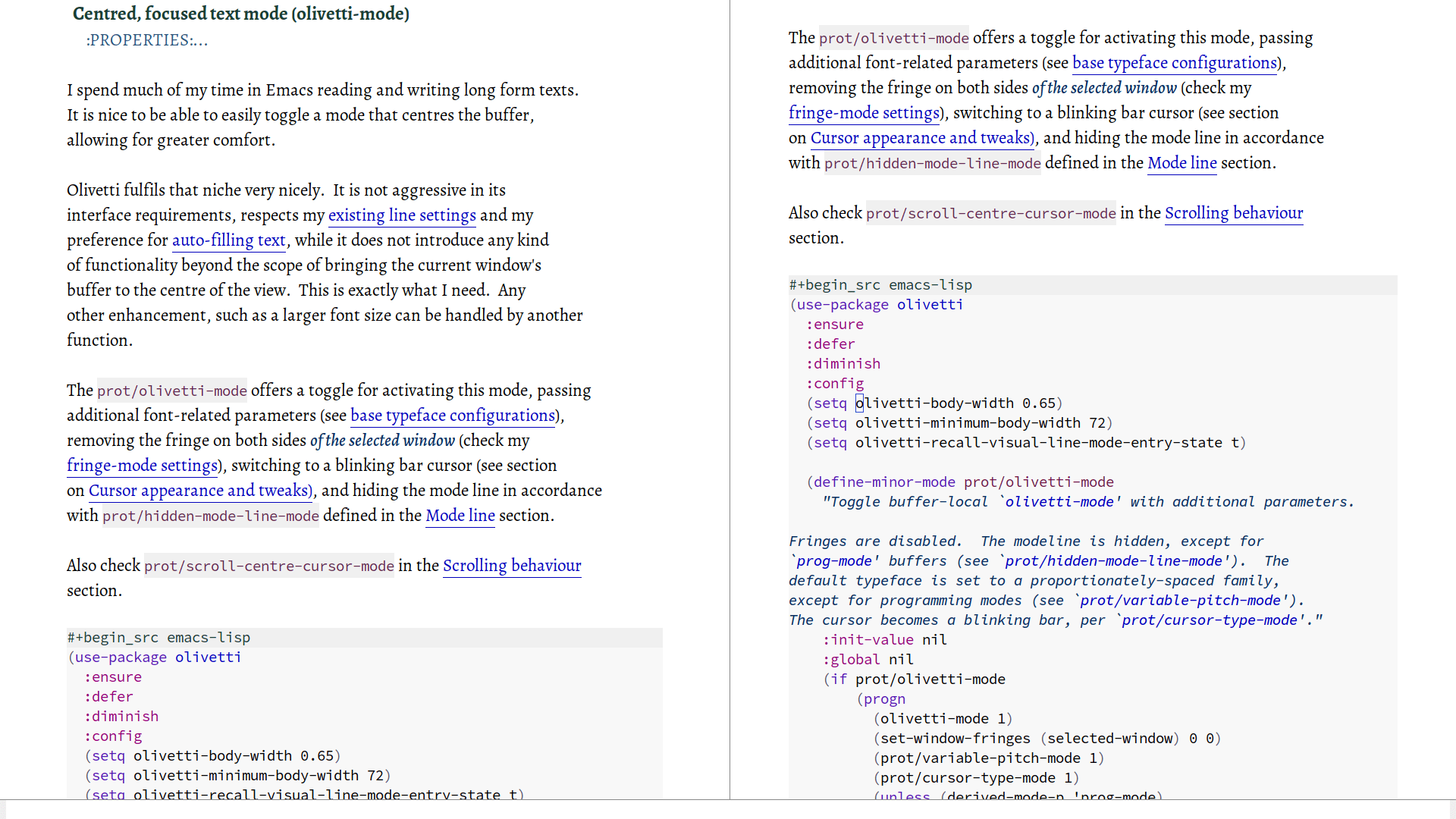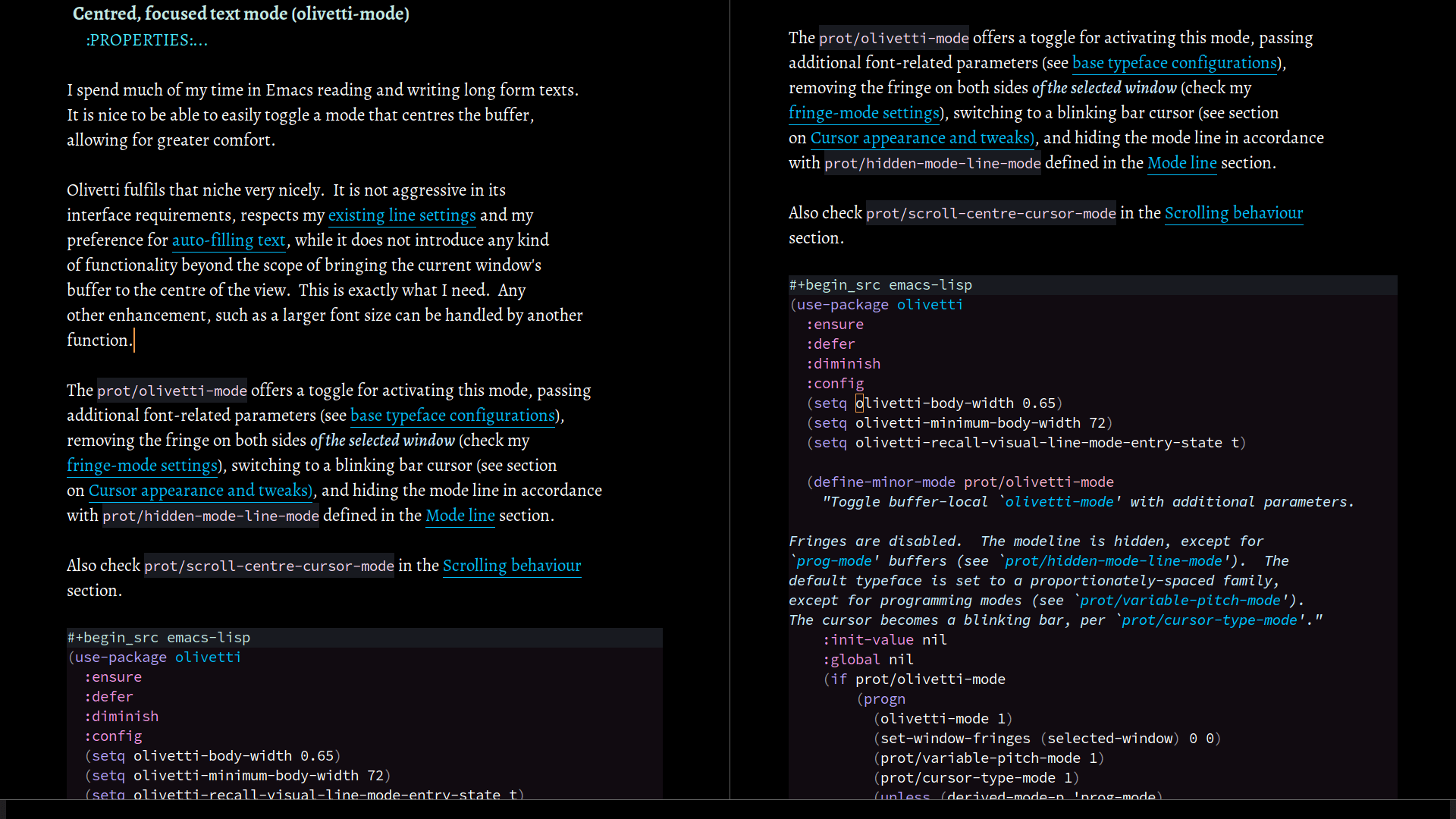
I was asked whether it would be possible to reproduce this aesthetic: https://lepisma.xyz/2017/10/28/ricing-org-mode/
I do not want to use writeroom-mode because it assumes far more things
than the narrower-in-scope olivetti-mode. So I am sticking with the
tools I presented in my last two videos:
So here are my two themes, Modus Operandi and Modus Vivendi, showcasing the result.
Remember to visit the image’s direct link to see it full size. The smaller view may distort some of its details. Also bear in mind that this is a proof-of-concept that is done on an existing document. I did not prepare a fake environment that would make things look good.




Note that here I also enable a few theme-specific customisation options, such as scaled headings and distinct org blocks (there are a lot of options). For Org blocks, you may also consider the “rainbow” symbol that you can pass to the relevant variable (check the project’s README), which applies a colour-coded background on a per-programming-language basis (useful for those who work with multiple languages in an Org buffer).
Overview of what is new for this proof-of-concept when
prot/olivetti-mode is enabled:
org-superstar-mode and by making sure that the heading marks are
empty, thus: (setq org-superstar-headline-bullets-list '(" "))window-divider-mode to draw 1px wide borders
to the bottom and right sides of the windows.To make the text look more book-like, I use the Alegreya font by Huerta Typografica, employing the methods I already explained in my video for mixing fonts.
If you want to force Olivetti to push the contents of the buffer off
centre, you could increase the values of olivetti-body-width and/or
olivetti-minimum-body-width variable. That would, however, not
produce a good effect when you have two windows side-by-side, so please
experiment accordingly.
For me this result is prima facie both usable and visually pleasing.
If you really want to control more things with padding, then do consider
writeroom-mode instead of olivetti-mode.
If you wish to use the Modus themes but tweak some of their colours, then I have good news for you: it is possible and supported! Check the README for the tools that the themes provide.
Below are the little extras you would need (always in addition to what I covered in the last two videos). I already had configurations for those, but I tweaked them a bit for the sake of this demo:
(use-package org-superstar ; supersedes `org-bullets'
:ensure
:after org
:config
(setq org-superstar-remove-leading-stars t)
(setq org-superstar-headline-bullets-list '(" ")) ;; '("🞛" "◉" "○" "▷")
(setq org-superstar-item-bullet-alist
'((?+ . ?•)
(?* . ?➤)
(?- . ?–)))
(org-superstar-mode -1))
(use-package emacs
:config
(setq window-divider-default-right-width 1)
(setq window-divider-default-bottom-width 1)
(setq window-divider-default-places t)
(window-divider-mode -1))
And this is the new prot/olivetti-mode:
(use-package olivetti
:ensure
:diminish
:config
(setq olivetti-body-width 0.65)
(setq olivetti-minimum-body-width 72)
(setq olivetti-recall-visual-line-mode-entry-state t)
(define-minor-mode prot/olivetti-mode
"Toggle buffer-local `olivetti-mode' with additional parameters.
Fringes are disabled. The modeline is hidden, except for
`prog-mode' buffers (see `prot/hidden-mode-line-mode'). The
default typeface is set to a proportionately-spaced family,
except for programming modes (see `prot/variable-pitch-mode').
The cursor becomes a blinking bar, per `prot/cursor-type-mode'."
:init-value nil
:global nil
(if prot/olivetti-mode
(progn
(olivetti-mode 1)
(set-window-fringes (selected-window) 0 0)
(prot/variable-pitch-mode 1)
(prot/cursor-type-mode 1)
(unless (derived-mode-p 'prog-mode)
(prot/hidden-mode-line-mode 1))
(window-divider-mode 1)
(when (eq major-mode 'org-mode)
(org-superstar-mode 1)))
(olivetti-mode -1)
(set-window-fringes (selected-window) nil) ; Use default width
(prot/variable-pitch-mode -1)
(prot/cursor-type-mode -1)
(unless (derived-mode-p 'prog-mode)
(prot/hidden-mode-line-mode -1))
(window-divider-mode -1)
(when (eq major-mode "org-mode")
(org-superstar-mode -1))))
:bind ("C-c o" . prot/olivetti-mode))